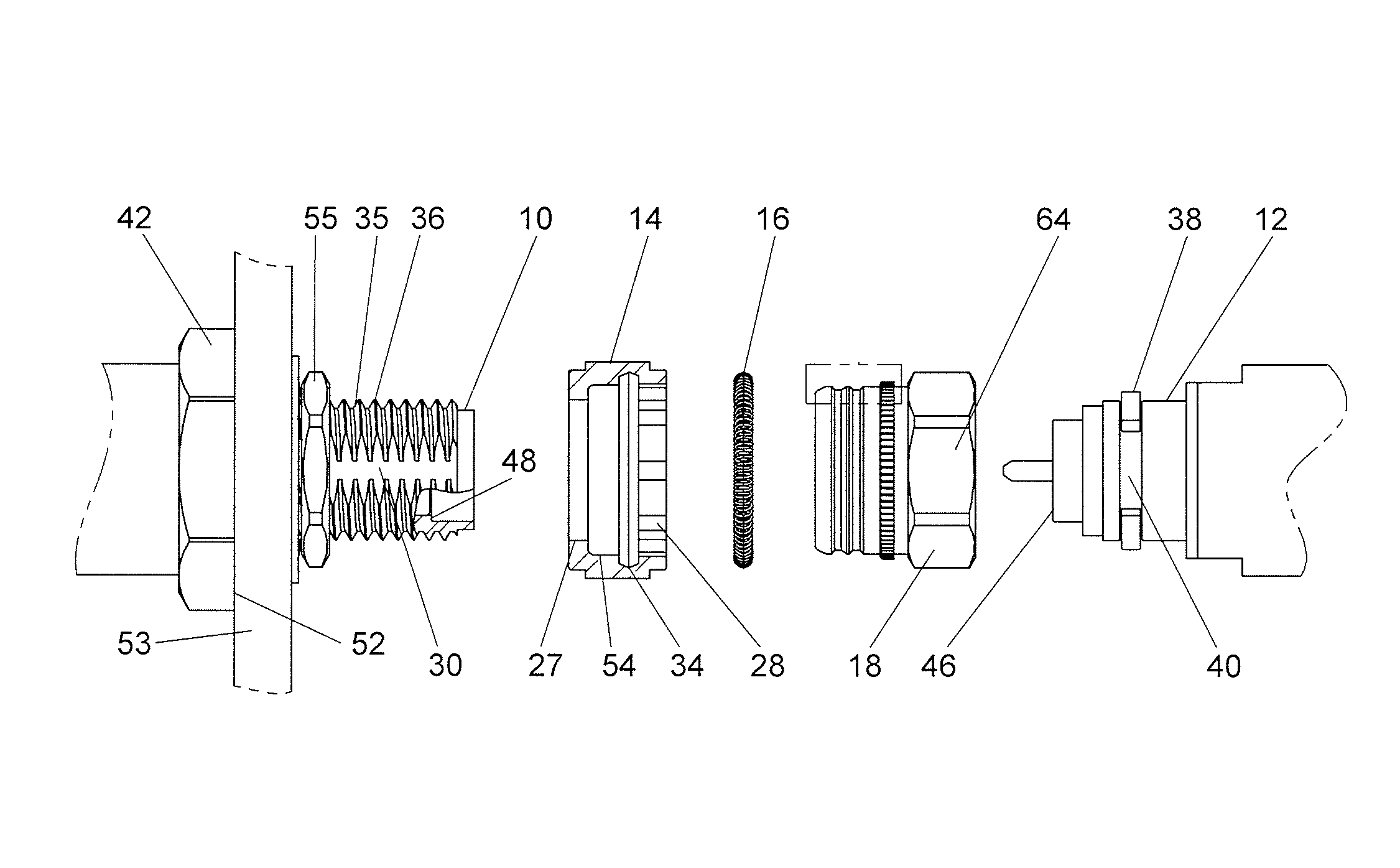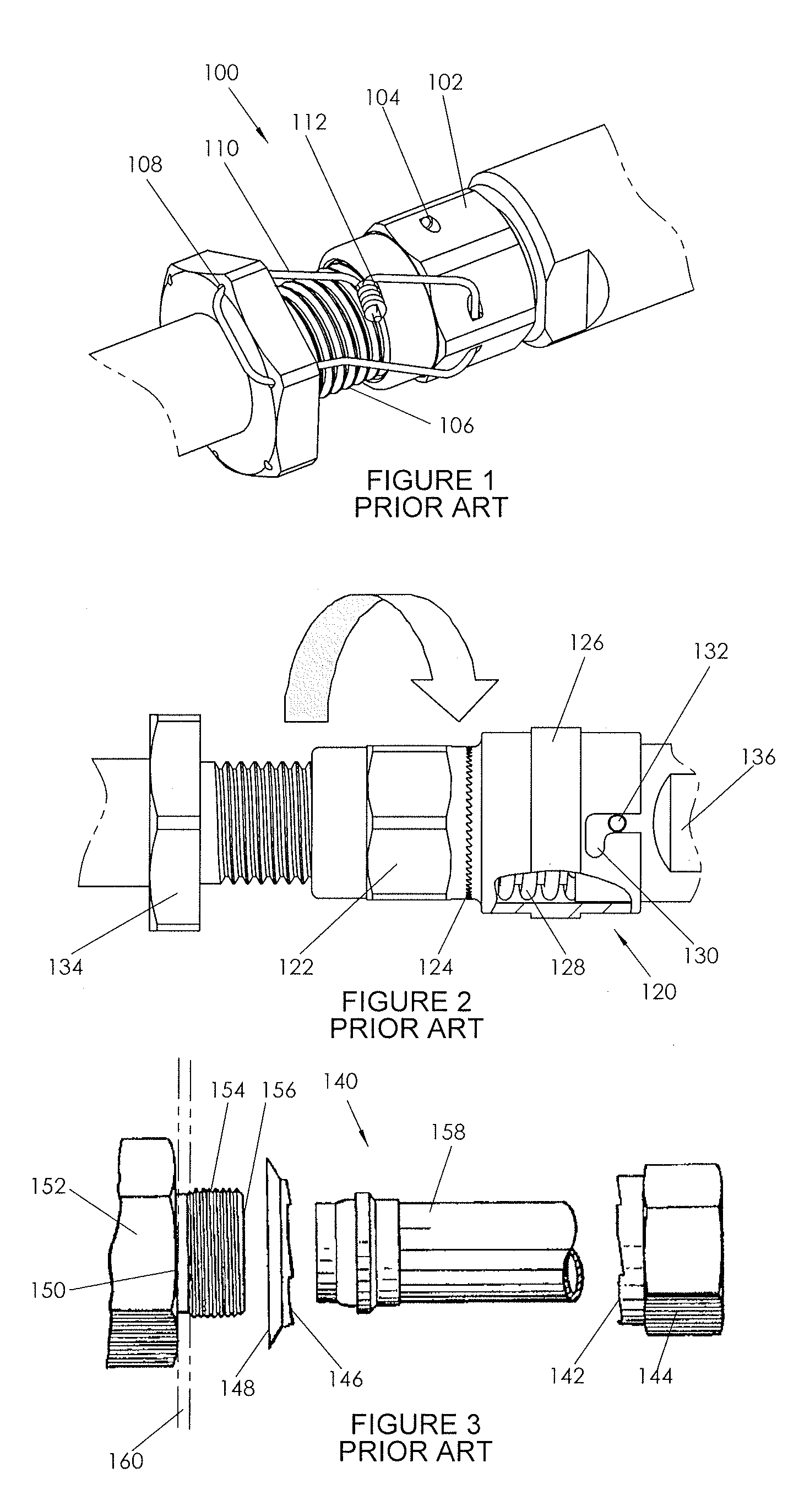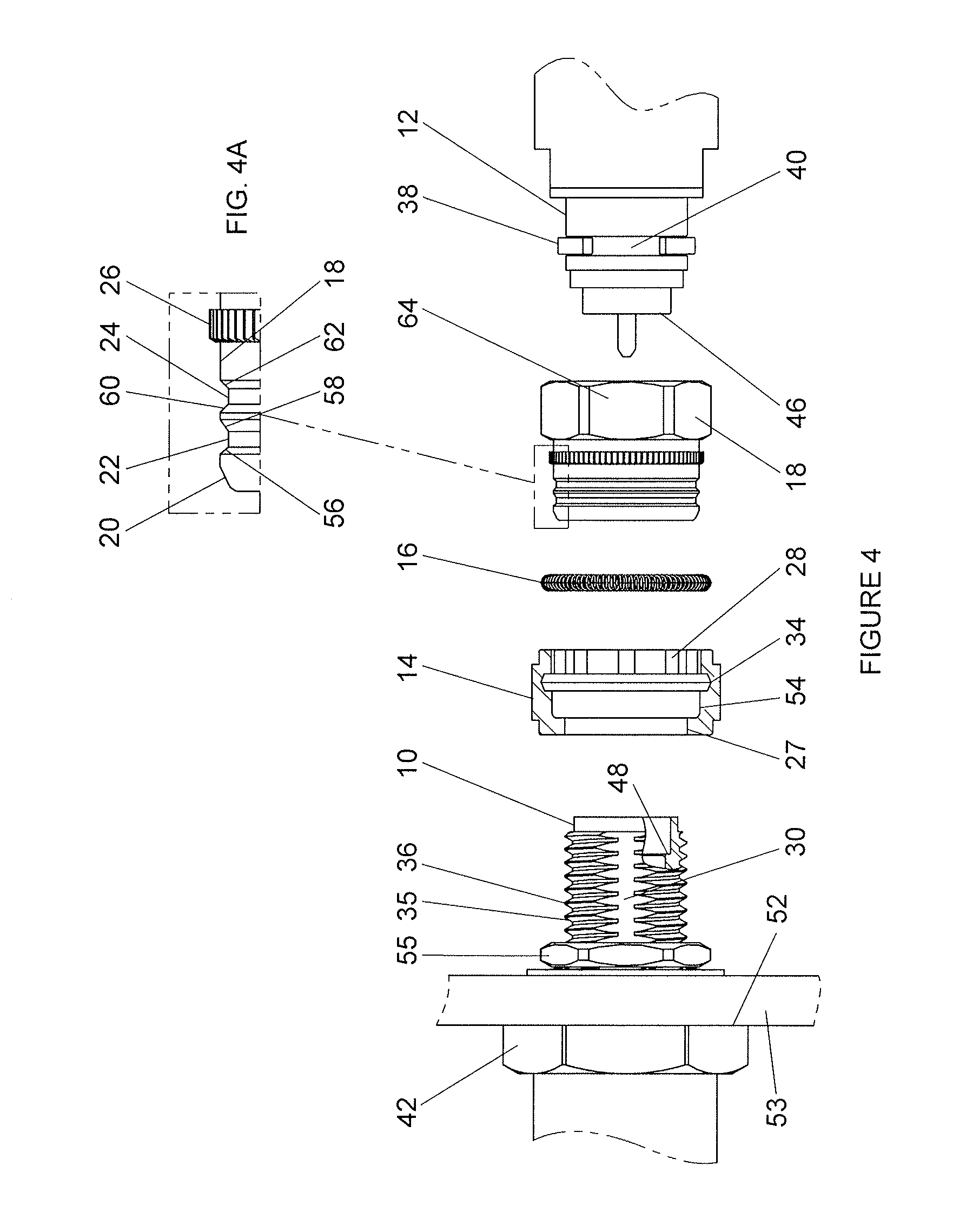Locking connector
a technology of locking connectors and connectors, applied in the direction of threaded fasteners, screw connections, coupling devices, etc., can solve the problems of post turning and loosening its own mounting, affecting the service life of the connector, etc., to achieve the effect of easy adaptability to other connector types or families
- Summary
- Abstract
- Description
- Claims
- Application Information
AI Technical Summary
Benefits of technology
Problems solved by technology
Method used
Image
Examples
Embodiment Construction
[0036]A better understanding of various features and advantages of the present invention will be obtained by reference to the following detailed description of embodiments of the invention and accompanying drawings, which set forth illustrative embodiments that utilize particular principles of the invention.
[0037]Referring to FIGS. 4 to 7A, and initially to FIG. 4, one embodiment of a connector for a coaxial cable according to an embodiment of the invention comprises a first body or connector member 10 having a threaded distal end 35 with at least one keyway in the form of a D-flat 30 axially along the threads 36. An annular sealing surface 48 is provided in the open end of the distal end 35 of connector member 10. Connector member 10 is also provided with a hexagonal structure 42 that can be grasped by a wrench for tightening. The distal face of hexagonal structure 42 defines a shoulder 52 that abuts the rear face of a panel 53 for mounting. Connector member 10 may be secured to pa...
PUM
 Login to View More
Login to View More Abstract
Description
Claims
Application Information
 Login to View More
Login to View More - R&D
- Intellectual Property
- Life Sciences
- Materials
- Tech Scout
- Unparalleled Data Quality
- Higher Quality Content
- 60% Fewer Hallucinations
Browse by: Latest US Patents, China's latest patents, Technical Efficacy Thesaurus, Application Domain, Technology Topic, Popular Technical Reports.
© 2025 PatSnap. All rights reserved.Legal|Privacy policy|Modern Slavery Act Transparency Statement|Sitemap|About US| Contact US: help@patsnap.com



